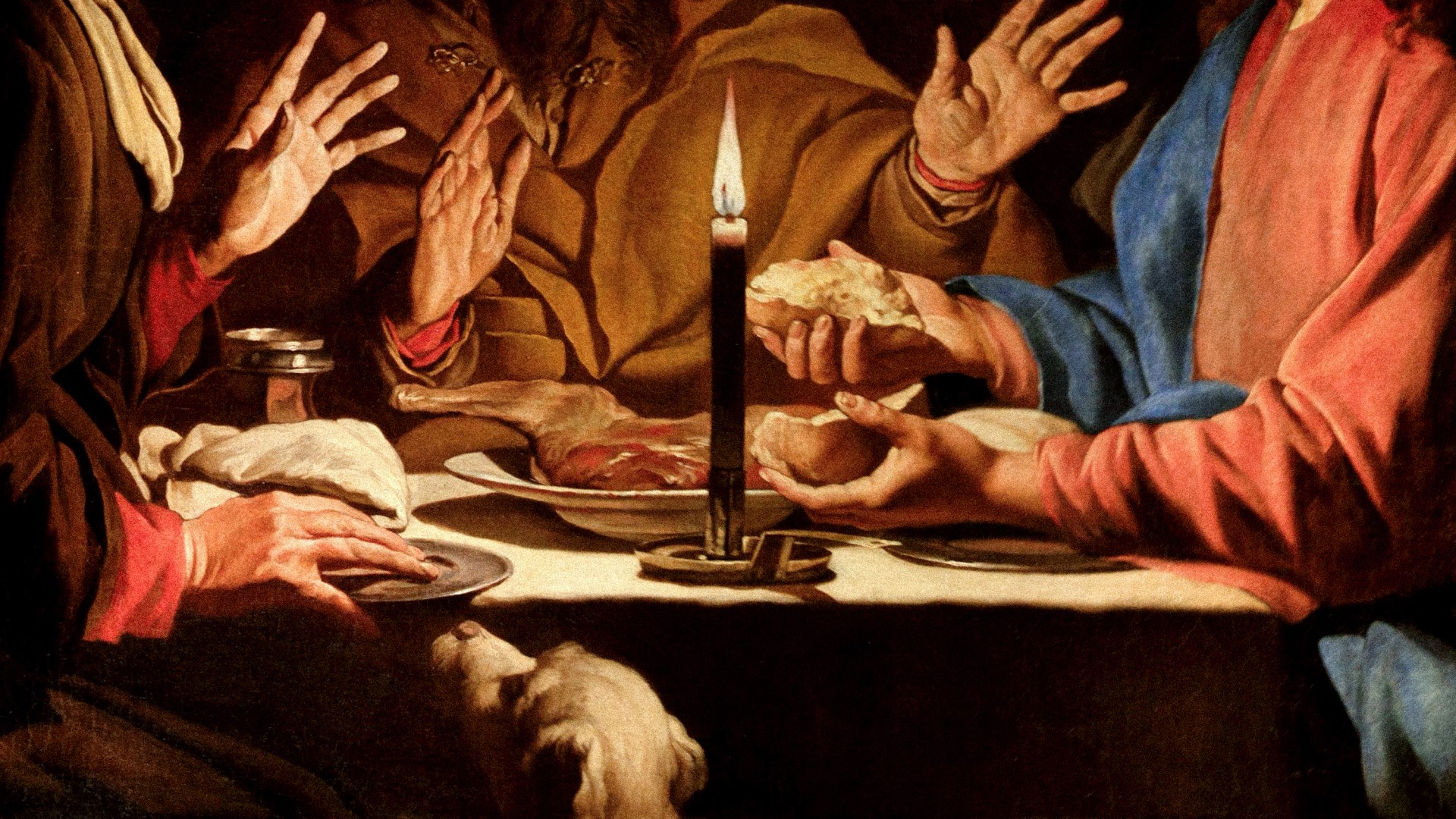When the waiter brought out my long-awaited high tea that day, I didn’t expect I’d still be grieving it decades later.
I was 21 and enjoying my first “real” spring break during a debt-building week away in London. After years of devouring chaste romances set in England, I’d learned that Harrods was the best place to experience the glories of scones, clotted cream, and tiny sandwiches, all served on tiers of gleaming china and, of course, washed down with hot tea. So on my inaugural trip across the sea, it seemed only right to indulge my credit card’s largesse on a high tea at Harrods. Alone.
As I looked around the room that day, I knew I’d made a grave mistake. Not even the tender scones and decadent clotted cream could balance the bitter taste of regret. They worsened it. With each new delight, I felt more keenly the lack of someone to share my enjoyment with.
When I was doing fieldwork for my book on singleness, someone told me it might be worse to eat alone than sleep alone. Eating alone is certainly a problem for people who live by themselves. But with 21st-century work schedules, sports practices, and other structural realities, even those with seemingly “built-in” meal companions in spouses or children or roommates often dine solo too. When we do share supper, allergies and dietary restrictions can create other divides. This shift has even changed apartment and home designs as dining rooms fall out of fashion.
Sometimes, the solitude of a meal alone feels welcome. Perhaps an introvert drained by a day of meetings wants nothing more than time alone to decompress. And for some harried parents, a quiet cup of coffee—a reward for getting up before the rest of the household—might feel like a rare and precious solace.
But for Christians, the question of how and with whom we eat involves more than our own preferences. What is God’s design for our meals?
Scripture includes a surprising number of stories featuring food. To prepare for liberation from slavery, God has the Israelites eat a special Passover meal of lamb, unleavened bread, and bitter herbs that observant Jews continue to recreate annually to this day. Jesus later reinterpreted this meal in the bread and wine of the Eucharist.
Jesus used food to make connections with outcasts and sinners. He made a meal to mend the rift caused by Peter’s betrayal, frying fish for breakfast on the beach. And it was only at the table that an Emmaus-bound duo finally recognized him.
Food also played a pivotal role in helping the early church grasp the extent of God’s vision for his people. As Willie James Jennings writes in his commentary on Acts, “to eat the animals that were associated with a people was to move into their space of living.”
This gives great significance to Peter’s thrice-repeated vision calling him to eat previously forbidden food. Jennings writes,
Peter is not being asked to possess as much as he is being asked to enter in, become through eating a part of something that he did not imagine himself a part of before the eating. This new eating grows out of another invitation to eat, one offered by his savior and friend: “This is my body, which is given for you.”
Not every church embodies a diversity that fully reflects the body of Christ. But to the extent we do, food provides one of the best ways to connect through our shared identity as God’s children. We all need the Eucharist’s embodied reminder of grace. Other shared meals, like post-service potlucks or coffee hours, point to both our equal dependence on God for life and the feast that awaits us in heaven.
And whether feeding the hungry and marginalized or organizing meals for the sick and weary, we acknowledge two truths: Our lives are interconnected, and what we do for the “least” in our midst touches Jesus himself. As the late Orthodox bishop David Mahaffey told me, “To me, God has given us food as a way of communion with him.”
What does all this mean for our many meals alone? Do they inherently fall short of God’s good design for sustenance?
One of my favorite things about the Bible is how much of life it contains: all kinds of people, all kinds of situations.
In the Book of 1 Kings, God sends Elijah east to Cherith, a presumably remote place where he’s instructed to hide until further notice. The author gives few details about this season, apart from the miracle of sustenance God provides against a backdrop of growing famine. Ravens, better known for taking food, bear the prophet’s meals.
Perhaps because of the birds, I’d never thought about the meals themselves as lonely. Yet Elijah must have spent day after day eating without human company. (For that matter, Adam, too would have eaten “alone” until God created Eve.)
I want to be careful not to fill in details the biblical authors did not provide. But a few things strike me about these men’s solitary meals. First, they involve an implied fellowship with God. Meals aside, the little we know of Adam and Elijah’s solitary seasons suggests a strong rapport with the Lord. Surely that extended to their meals too. In fact, perhaps they didn’t really feel alone because of his presence.
Second, both received direct provision from God—water and the ravens’ food for Elijah, fruit for Adam. Under these circumstances, I would hope both men regularly offered thanks. How often and well do we do this? Scarfing down a piece of toast while we drive or eating leftovers on the couch, it’s all too easy to dive in with scarcely a word of acknowledgment.
Lastly, it strikes me that both men ate alone during seasons of preparation. As Priscilla Shirer draws out in her study of Elijah, God used the time at Cherith to prepare Elijah for unexpected communion at Zarephath and eventual confrontation with Ahab. Adam’s meals alone occurred during a time of learning about the work God had given him and slowly coming to realize his need for human companionship. In fact, they occurred before the Fall!
So maybe our meals alone can still honor God’s design. How? Maybe we slow down to notice the sights, sounds, scents, sensations, and tastes of eating. (This can also help with anxiety and stress.) Instead of distracting ourselves with YouTube or social media, we can acknowledge and welcome God’s presence with us. And we can give sincere thanks for those who made and delivered and planted and cultivated and harvested, as well as the One who provided the rain.
And also: We should try to eat with others as often as possible.
I write this as someone who now eats many meals alone, sitting at my gate-leg dining table in the chair that faces the window. Thanks to one book interview with a Norwegian man who sometimes paid bills while he ate—and hated this—I try hard to avoid doing work during dinner. On better nights, I eat while reading or listening to a book. On worse nights, I scroll on my phone.
Not long ago, I shared a late-night bite with a friend who’d come by to get something. We almost always eat something together during visits, often my latest homemade soup. A few bites into that night’s bowl, he asked, “How was your day?”
After years of living in community, I’m now several months into only the second place I’ve rented alone in some 20 years. At my friend’s simple question, my shoulders dropped and tension melted away. Suddenly I was back at the family dinner table of my junior high and high school years.
On weekdays, we rarely ate any other meal with my dad. So he used our dinners to help all six of us connect. One by one, he went around to each of us as we shared “high” and “low” points from our day. This was one of the most emotionally formative rituals of my upbringing. It had a structured cleanup ritual (a nightly chore rotation, carefully tracked on the calendar), and clear boundaries for limited dissent from the family rules (we each got one dish from Mom’s recipe rotation that we didn’t have to eat).
Through our Friday night dinners of homemade hamburgers and French fries, we learned to celebrate the ordinary. Sometimes, our parents even splurged on a two-liter bottle of pop, though I wouldn’t make the connection to work weeks or paychecks until I became an adult myself.
Hospitality sacralizes the everyday. While apps help some find restaurant meal partners, eating at home has an extra vulnerability that deepens connections and accommodates more varied budgets. I love that another friend who lives nearby has started texting me when he’s made too many potatoes or too much chili (often leading to an impromptu meal). Other friends know they might have to clear a dining table chair or that I might serve leftovers. After months of such visits, one married friend finally invited me over for lunch at her home—our first meal there in a yearslong friendship.
Sharing food can take vulnerability and flexibility. But once you get past the initial risk or discomfort, deeper connection usually follows, and loneliness recedes.
Last summer, I briefly lived with a couple who often didn’t connect until the end of their day. Before he left for his bartending job, the husband prepped dinner in the Instant Pot and left it for his wife to eat when she came home from her work as a hairdresser. One night, he made chili; another night, fish chowder. Even when he got home late, even if she’d already eaten what he’d prepared, they often debriefed their days over additional shared food or drink.
When I moved in with the couple, they were eager to embrace communal living, but doubtful we could eat together. I cooked very differently from them, and they both had several allergies. But they often loved how my cooking smelled, and so I made a list of their restrictions so I could accommodate them. As we all settled into living together, I tried to find recipes we could all eat, or made small tweaks that worked with their diet. We ate stuffed peppers with cabbage leaves; for his birthday, I made my family’s eggless applesauce cake with gluten-free flour. By the end of my four months there, they were trying to include me in their detailed weekly meal plans.
It took compromise, for all of us. But looking back, it seems like all the times we three felt most connected involved either food or the kitchen or both. Whether any of us acknowledge it or not, God’s plan for food seems to keep reasserting itself. Perhaps that’s why Jesus most often depicted heavenly life as a massive feast, a theme John later takes up with his allusions to the marriage supper of the Lamb.
Revelation ends with the promise of food restored, after all. In its final chapter, the tree of life, whose fruit caused God to banish humans from Eden, reappears (Gen. 3:22, Rev. 22:2). Only once God resumes sharing that food with humans does the Bible declare the curse no more, and God and humans so close that “they will see his face.”
Anna Broadway is the author of Solo Planet: How Singles Help the Church Recover Our Calling and Sexless in the City: A Memoir of Reluctant Chastity.















































